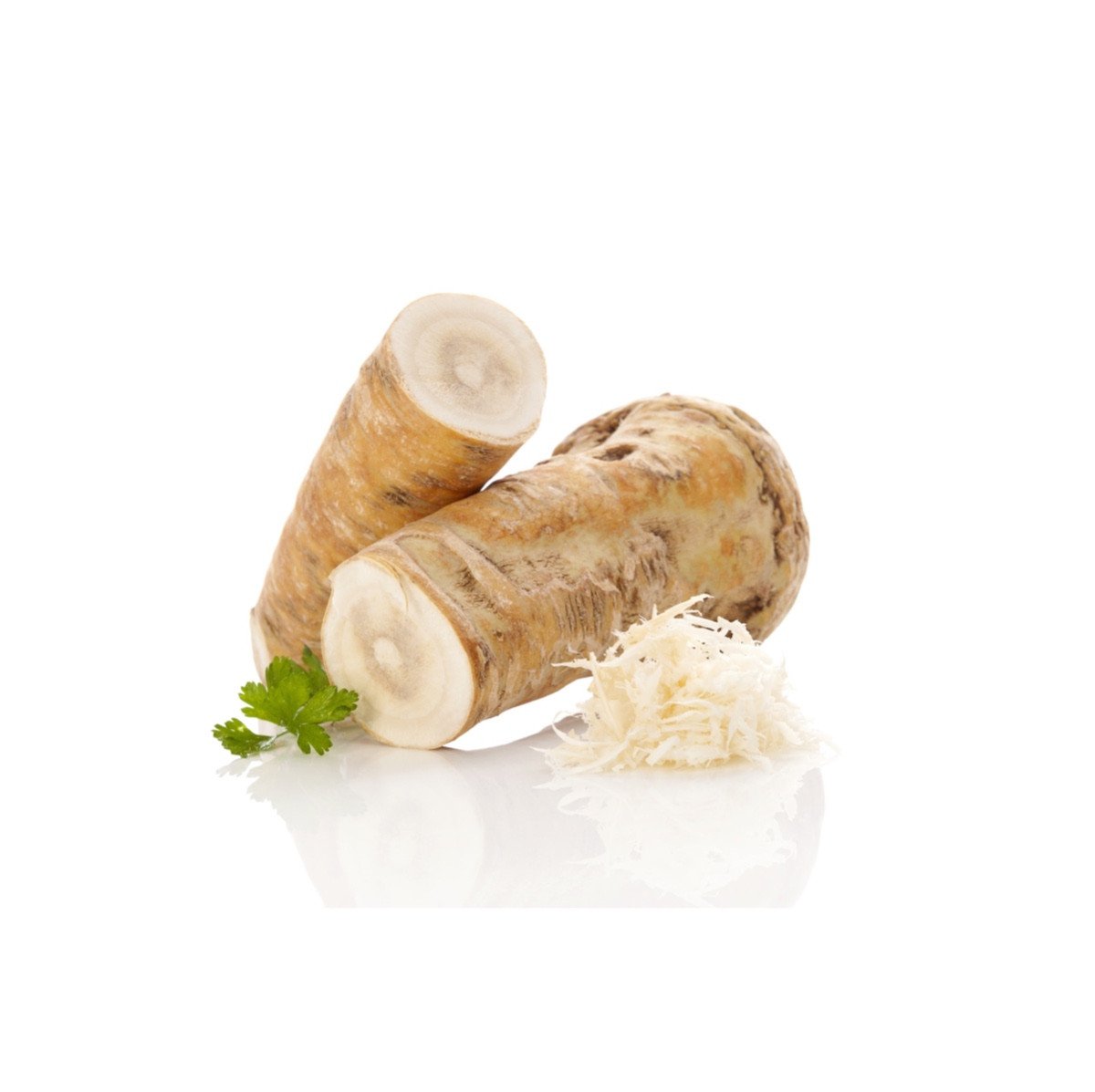Horseradish

Horseradish
Armoracia rusticana
Plant family
Crucifers (Brassicaceae)
Season Overview
Sowing
Harvest
Harvest
J
F
M
A
M
J
J
A
S
O
N
D
1ST YEAR
FOLLOWING YEARS
Details
Light requirement
Sunny
Water requirement
Moist
Soil
Light (sandy)
Nutrient requirement
Medium
Plant distance
60 cm
Row spacing
60 cm
Seeding depth
15 cm
Instructions
Description
Horseradish (Armoracia rusticana) belongs to the cruciferous family (Brassicaceae) and is called horseradish in Austria. The imposing perennial plant has large leaves and thick, cylindrical taproots. We like its pungent, 30-40 cm/11.8-15.7 in long roots as a spice or vegetable. As a perennial, hardy plant, it thrives in almost all soils and locations.
Origin:
Eastern and Southern Europe
Growing tips
The seeds of horseradish are rare and mostly incapable of germination. Sowing them is not common here. Instead, you pull it from so-called Fechsern. These are the lateral roots of the thick main root. The fechser are planted diagonally at an angle of about 45°. It is best to plant it at the edge or outside of beds, because it is difficult to remove, and it already grows out again from small root parts. The soil should be deep. This will allow the root to grow unhindered. To stimulate growth, you can occasionally loosen the soil around the horseradish a little. Due to the rapid spread, cut away shoots (small leaves). 3-4 stems with leaves per plant is enough. Anything beyond that will sprawl. The growing season is one year. The best time to harvest in terms of flavor and size is after the first frost. Horseradish is also sensitive to high levels of salt in the soil.
Companion Plants
Antagonistic Plants
Arugula / Rocket
Broccoli
Brussels sprouts
Cabbage (Cabbage)
Cauliflower
Collard greens (Kale)
Collard greens (Tuscan kale / Dinosaur kale / Palm tree kale)
Cress
Kohlrabi / German turnip / Turnip cabbage
Mustard
Oil radish / Fodder radish
Pak Choi
Radish
Radishes
Rutabaga / Swedish turnip
Turnip
Turnip-rooted chervil
Diseases
Downy mildew
Club root of cabbage
Pests
Cabbage white
Flea beetles
Caterpillars
Mustard beetle
Larvae
Aphids
Voles